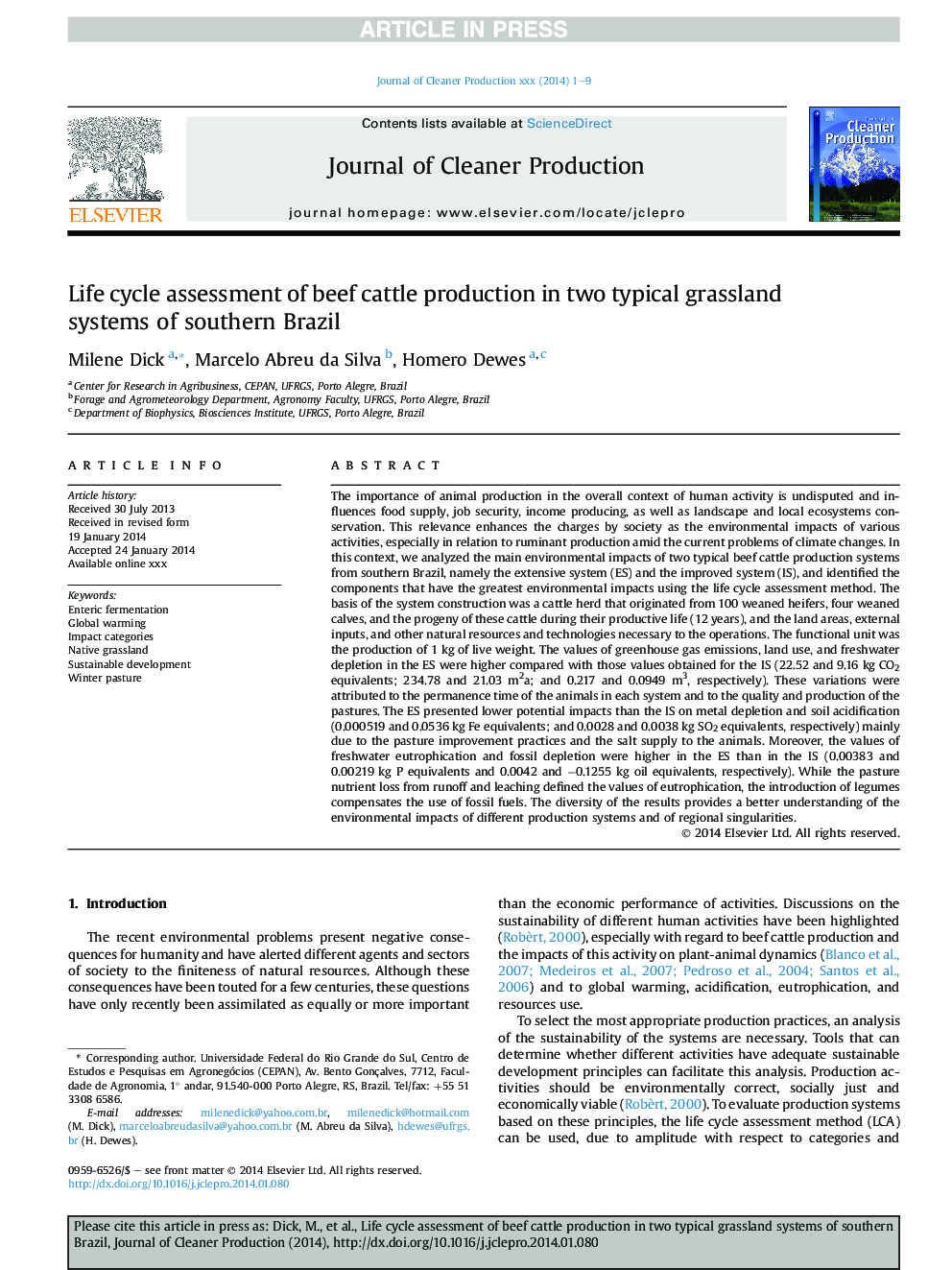| کد مقاله | کد نشریه | سال انتشار | مقاله انگلیسی | نسخه تمام متن |
|---|---|---|---|---|
| 8104463 | 1522150 | 2015 | 9 صفحه PDF | دانلود رایگان |
عنوان انگلیسی مقاله ISI
Life cycle assessment of beef cattle production in two typical grassland systems of southern Brazil
ترجمه فارسی عنوان
ارزیابی چرخه حیات تولید گاو گوشتی در دو سیستم علفی معمولی در جنوب برزیل
دانلود مقاله + سفارش ترجمه
دانلود مقاله ISI انگلیسی
رایگان برای ایرانیان
کلمات کلیدی
تخمیر روده ای، گرمایش جهانی، دسته های تاثیرگذار، چمنزار بومی، توسعه پایدار، مرتع زمستانی،
موضوعات مرتبط
مهندسی و علوم پایه
مهندسی انرژی
انرژی های تجدید پذیر، توسعه پایدار و محیط زیست
چکیده انگلیسی
The importance of animal production in the overall context of human activity is undisputed and influences food supply, job security, income producing, as well as landscape and local ecosystems conservation. This relevance enhances the charges by society as the environmental impacts of various activities, especially in relation to ruminant production amid the current problems of climate changes. In this context, we analyzed the main environmental impacts of two typical beef cattle production systems from southern Brazil, namely the extensive system (ES) and the improved system (IS), and identified the components that have the greatest environmental impacts using the life cycle assessment method. The basis of the system construction was a cattle herd that originated from 100 weaned heifers, four weaned calves, and the progeny of these cattle during their productive life (12 years), and the land areas, external inputs, and other natural resources and technologies necessary to the operations. The functional unit was the production of 1 kg of live weight. The values of greenhouse gas emissions, land use, and freshwater depletion in the ES were higher compared with those values obtained for the IS (22.52 and 9.16 kg CO2 equivalents; 234.78 and 21.03 m2a; and 0.217 and 0.0949 m3, respectively). These variations were attributed to the permanence time of the animals in each system and to the quality and production of the pastures. The ES presented lower potential impacts than the IS on metal depletion and soil acidification (0.000519 and 0.0536 kg Fe equivalents; and 0.0028 and 0.0038 kg SO2 equivalents, respectively) mainly due to the pasture improvement practices and the salt supply to the animals. Moreover, the values of freshwater eutrophication and fossil depletion were higher in the ES than in the IS (0.00383 and 0.00219 kg P equivalents and 0.0042 and â0.1255 kg oil equivalents, respectively). While the pasture nutrient loss from runoff and leaching defined the values of eutrophication, the introduction of legumes compensates the use of fossil fuels. The diversity of the results provides a better understanding of the environmental impacts of different production systems and of regional singularities.
ناشر
Database: Elsevier - ScienceDirect (ساینس دایرکت)
Journal: Journal of Cleaner Production - Volume 96, 1 June 2015, Pages 426-434
Journal: Journal of Cleaner Production - Volume 96, 1 June 2015, Pages 426-434
نویسندگان
Milene Dick, Marcelo Abreu da Silva, Homero Dewes,
